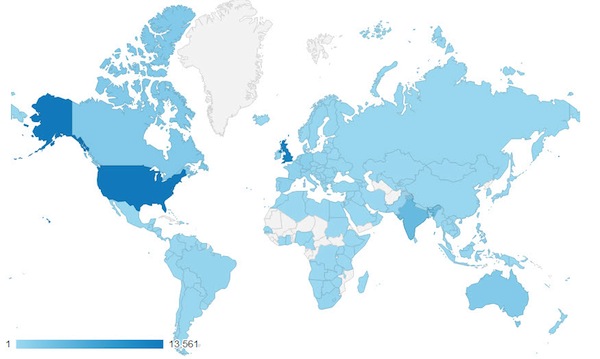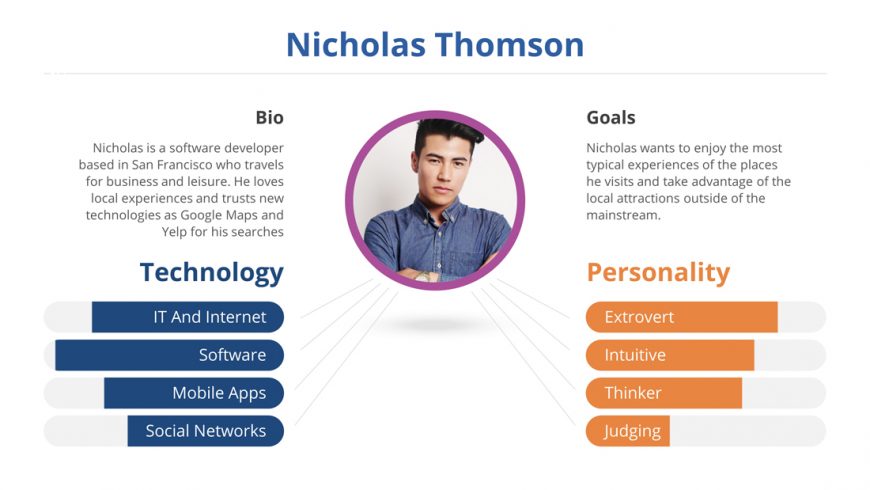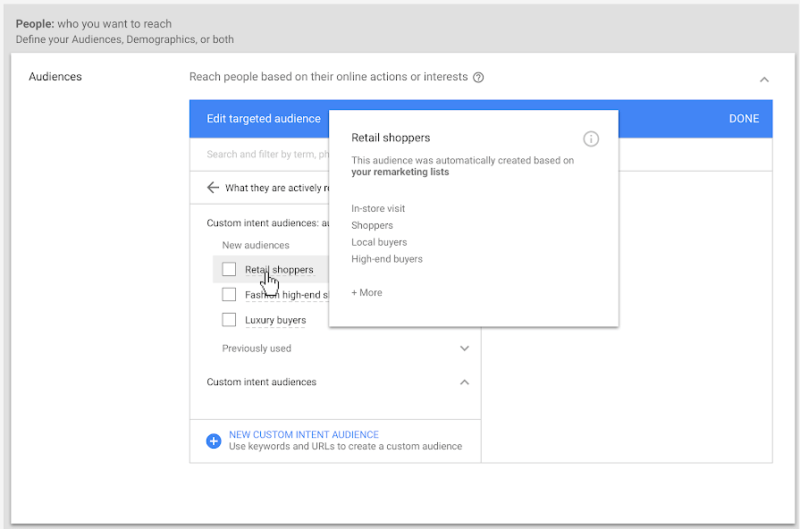In today’s technological world, data is becoming increasingly important to businesses. In fact, in recent years data has actually become more valuable than oil, making it the most sought-after resource there is. The job of analysts and marketers is to use this abundance of data to be able to target the right people and ensure their message is reaching the right audience. This is mostly achieved through adverts and other online content.
But with so much data already out there, and with new technologies and platforms emerging all the time, it’s becoming increasingly difficult and costly to reach your target audience. The internet is a crowded place and consumers are constantly being bombarded with information. As such, one of the strategies that many businesses are implementing is that of buyer personas. This allows them to get better insights into their audience in the hope of getting their message in front of the right people and increasing revenue and sales.
But what exactly are buyer personas and how can you use them in your business? Our comprehensive guide below is going to look at the definition of a buyer persona and explain why they are so important. We also explain how you can create your own and use them to help drive your business forward.
What is a persona character and why are they so important to your business?
Many industry experts have tried to put together a succinct definition of a buyer persona, but with so much importance placed on what is essentially a fictional character, this does require a bit of explaining…
Perhaps one of the simplest explanations was given by the team at HubSpot, who define a customer persona as “a semi-fictional representation of your ideal customer. It’s based on market research, actual data about your existing customers, and a few (educated) assumptions”. The persona is described as ‘semi-fictional’ because although the character you create will be made up, it is based on data from real people.
Taking our understanding to the next level then, each persona you create (and yes, businesses can have more than one buyer persona) is based on the background, needs, objectives and goals of your target customers. In order to be able to use your personas effectively, they need to be modelled around the behaviour, thoughts and buyer decisions of your target audience – this helps you to target them effectively with your marketing strategies.
So what is the importance of these personas?
Put simply they help you to understand your audience so you can relate to them. This makes it easier for you to market your products or services towards them. You do so by taking into consideration their daily needs, any challenges they may be faced with or any issues that you can help them to solve. This is a vital step in approaching a local SEO strategy.
By using data to map out trends, look for patterns in their behaviour and pull together a list of similarities, you can create a generic character representation of your audience, no matter how niche. Having a strong understanding of this buyer persona then allows you to empathise with them and show them that you understand their needs and wants. This means you can adjust your messaging, advertising and content accordingly to appeal to them and offer real value to their lives. This will ensure they continue to engage with your brand.
In summary
Let’s quickly recap on what we know about buyer personas and why so much value is placed on defining them for your business. They are semi-fictional character representations of your target audience, created by analysing data to understand their consumer habits, behaviours, motivations and goals. By collecting this data and creating these characters businesses are able to target their audience with the right messaging, adverts, content and even have a better understanding of where to target them. This is the reason that creating these buyer personas is so important and beneficial for businesses and their marketing teams.
Creating your buyer personas
Creating your buyer personas doesn’t happen overnight. It takes time, patience, a lot of research and thought. You need to be able to analyse your customers based on data and educated guess work, to construct the fictional character of your buyer persona. This needs to be a very methodical process and there are lots of elements involved. Below we’ll go into detail about what you need to know, how to gather the information and subsequently, how to create your buyer personas from this information.
What you need to know
In order to begin collecting your data there are several questions you need to ask if you hope to make the most of this information. Below we’ll look at the sorts of things you need to know about prospective and existing customers, some of these are optional while others are more crucial to your research.
- Industry: What industry do they work in? How long have they been in the industry? What is their job title?
- Location: Where do they live?
- Challenges: What challenges do they face on a regular basis? How do they overcome these?
- Demographics: If appropriate ask their age, gender, marital status and if they have children
- Shopping preferences: Where do they shop e.g. online? What was their most recent purchase? How do they talk to retailers or vendors if they have a problem or query? Do they research retailers before buying?
- Education: What level of education do they have? What did they study? What are their qualifications?
- Goals: What are their aspirations? What motivates them?
- Activities: Have they got any hobbies? Where do they go in their spare time? What publications do they read?
Why is this important?
Asking these questions helps you to ascertain the demographics of your target audience, any common problems they face, how they prefer to shop and what motivates them on a daily basis. It’s important to gather as much information as you can because this helps you to create a more accurate buyer persona, which in turn helps you to better target your audience. Below we’ll look at how you can gather the data you need and how you can turn this into a persona.
Conducting your research and analysing data
There is no such thing as too much data when it comes to creating your buyer personas, and there’s number of ways you can gather the information you need. The methods you choose will depend on your business and what data you already have, but below is a list of ways you can gather this crucial information.
Interviews/surveys
Whether you choose to conduct face-to-face interviews or send out online surveys that can be completed from anywhere, it’s a good idea to quiz your existing and prospective customers. There are several platforms out there that allow you to create online surveys, and you can offer incentives to convince more people to take part. Alternatively, you can reach out to your network or post ads on social media and other sites looking for interviewees. Again, you might want to incentivise this and be clear that it is not a sales pitch. This will help you find a bigger focus group to interview.
Online forms
You can use online forms to capture data quickly and easily. For example, you might ask customers to sign up to your newsletter, at which time you ask them a few questions about themselves. You could also have a pop-up window on your site which invites visitors to answer a few quick questions. You may want to incentivise this as well to get more people filling in the form, for example offering a 10% discount if they answer some questions.
Phone calls
Depending on the nature of your business you could spend time making calls to existing and prospective customers/clients. This can take a bit longer and requires you to have the contact information of a lot of people. But speaking over the phone can be really beneficial for getting more in-depth information.
Analytics
It’s possible that you already have data from your websites. For example, if your company uses Google Analytics, you’ll be able to gain information such as the location of your customers and those visiting your website. You can also use the built-in analytics tools on a number of social media platforms to find out when most people are engaging with your brand, where they are based and how old they are. There are a number of useful analytics tools out there that you can use to help you build a better picture of your audience.

Source: Google, ‘Analytics Locations Map‘
Creating your personas from the data
Once you’ve spent the time gathering as much data as you can, however you decide to do it, you need to make sense of the information you’ve collected. At this stage you’ll have a lot of information that you need to deal with. So to get started refer back to the original questions you asked yourself before you began your data collection and this will help you to start recognising patterns or trends.
For example, if you notice that most of your customers are males from London who work in the digital and media industries, this is your starting place for creating your persona. You can then drill down further looking at their age, family status, their key challenges and how they choose to shop. The more information you have the more you can add to your character.
That said, handling this much data can be overwhelming and sometimes it can be tricky to get started. To make things simpler, there are a number of downloadable templates out there that you can use to help you make sense of the data and create your personas.

Source: slidemodel.com
What’s more, some businesses even choose to have a digital image made up as a visual representation of their buyer. This can be really helpful when picturing your target audience and using this information to tailor your messaging and content towards them. It’s possible that you’ll notice a number of patterns, leading to the creation of more than one persona.
What can I do with my persona?
Now that you’ve invested your time and resources into creating your buyer personas, it’s time to put them to good use! There are a number of ways you can use your personas to help drive your business forward, build your brand and increase your revenue. These are outlined below.
Creating the right messaging
Your company website, logo, slogan, mission statement and advertising all need to carry the same message. This is where your buyer persona comes in. You can use this to help you create the right message that resonates with your customers and target audience. It’s crucial that you get this right as soon as possible if you hope to take your business to the next level.
Target your ads
Having a strong idea of who your customers are will help you to target them in the right places. For example, if you know where they spend their free time you can target them there, if you know how they spend their time online you can choose targeted adverts for those particular sites. Similarly, if you know how they get to and from work or where they do their shopping you can target them on their commute or in the supermarket. Armed with your buyer personas you can tailor your advertising to ensure it reaches the maximum number of people.
Adjust your content
By understanding the challenges of your buyers, you can create content that will add real value to their lives. This could be by the way of advice articles or blog posts. As the benefits of podcasting are numerous, you can also create podcasts for your audience and educate them on topics they are interested in. Using your personas, you can also tailor your social media content, the articles or news you share, and your messaging to appeal to your target audience.
Conclusion
As you can see, creating buyer personas takes time and careful thought. To get started spend time collecting as much data as you can and analyse your findings to identify your target audience. After creating your persona, you can use them to effectively tailor your advertising and content to appeal to your target audience. This will help you to increase sales of your good or services, as well as building your brand.
Want to find out more about how you can take your online marketing to the next level and get your website in front of those who really matter? Get in touch with us today and find out how we can help.




